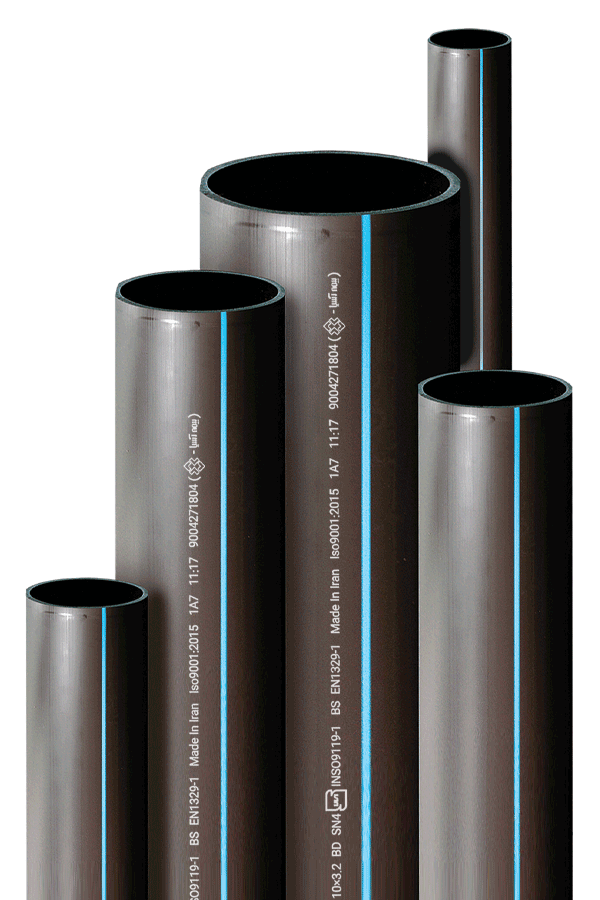A thorough analysis of HDPE pipes over GRP pipes
- Article
- A thorough analysis of HDPE pipes over GRP pipes

- July 4, 2023
- 9:09 am
A thorough analysis of HDPE pipes over GRP pipes
Some research centers in the U.S have attempted to gather data on polyethylene and GRP pipes. The experiments were carried out in valid centers such as the laboratory of the plastics pipe institute, plastics engineering labs, and structural composites institutes. These experiments eventually led to brilliant findings about the advantages of HDPE pipes over GRP pipes.
To obtain the desired results, all short-term and long-term functions and structural characteristics of the two pipes were carefully analyzed during the experiments. Both types of pipes were separately analyzed based on AWWA standard.
PE and GRP pipes were tested based on AWWA C906 and AWWA C950 standards respectively. In the following article we aim to explain the results of these experiments in simple words. It is important to note that GRP pipes were compared to high quality polyethylene pipes (PE100) using AWWA C906 standard.
Furthermore, similar sizes (30 to 600 mm) of both pipes were compared during the experiment. In a nutshell, the factors tested in these experiments are as follows:
- Compressive strength
- Fittings and connections
- Abrasion resistance and easy shipping
- Pipe buoyancy and applications in marine projects
- Bedding conditions
- Environmental impacts on pipes
- Chemical resistance
- Impact resistance
- Tensile strength of pipes
Compressive Strength
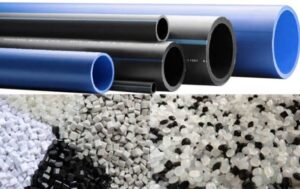 Difference between the two types of pipe
Difference between the two types of pipe
To explore the advantages of HDPE pipes over GRP pipes we first compare the compressive strength of both pipes. As you know, hydrostatic testing is one the most accurate testing methods to assess the resistance of pipes against different types of pressure. By doing hydrostatic tests researchers found that polyethylene pipes had a higher resistance against such pressures compared to GRP pipes.
That is because GRP pipes burst totally when they reached their rupture threshold under high pressures. Whereas, polyethylene pipes only experienced cracks as long as 37 to 100 cms. This proved that polyethylene pipes were highly resistant against earthquake and other geological changes.
Connections and fittings
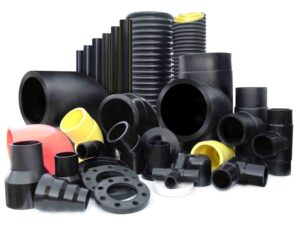 Difference between two pipes
Difference between two pipes
The second characteristic we will explore about the advantages of HDPE pipes over GRP pipes is pipe connections and fittings. According to the obtained data researches found out that GRP pipes were connected using special adhesives.
The main problem with such connections is that they gradually reduce pipe’s strength and service life. They might also have leakages with any type of changes. This is considered one of the most important shortcomings of GRP pipes in running projects.
Whereas, using polyethylene pipes in projects gives this opportunity to employers to build connections based on project type. On the other hand, polyethylene pipes have a higher sealing speed which makes them easy to install. In other words, the project will be done in a shorter time and there will be no leakages.
Abrasion Resistance and Easy shipping
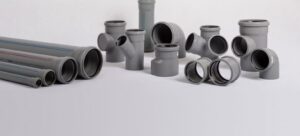 Difference between two pipes
Difference between two pipes
Another finding of the experiment was the importance of abrasion impact on pipes. Applying GRP pipes in different projects requires the employers to follow certain rules. For instance, these pipes should not contain any grooves, holes, impurities, cracks, or even cuts.
In addition, if GRP pipes contain cuts as deep as 10 percent of the pipe’s wall thickness or more they become useless. In other words, if the surface of GRP pipe is exposed to the slightest stress in the installation process the employer will pay huge damages.
Whereas, polyethylene pipes are highly resistant against any kind of damages and cuts during shipping. Furthermore, not every cut lowers the resistance of polyethylene pipes. Since polyethylene pipes are hardly damaged in the shipping process they have an easy and low-cost transportation.
Marine Applications and Buoyancy of Pipes
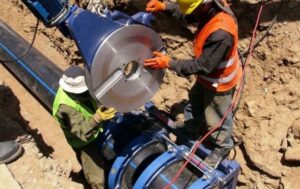 Difference between two pipes
Difference between two pipes
Researchers analyzed the buoyancy of pipes when exploring the advantages of HDPE pipes over GRP pipes. This helped them to explore the application of the pipes in marine projects. Since GRP pipes have a brittle nature they have no buoyancy.
As a result, their application in marine projects is banned. Whereas, polyethylene pipes are buoyant. That is why they float during floods and raised levels of underground waters and some measures need to be taken to control them.
Bedding conditions of pipes
As you know, deflection control is an accurate scale to measure the resistance of GRP pipes against external loads. To do that, the bedding of these pipes need to have certain characteristics compared to polyethylene pipes. When analyzing the advantages of HDPE pipes over GRP pipes researchers found out that the bedding of GRP pipes should contain highly compacted soil in accordance with the pipe’s diameter.
You should note that this is important since it leads to equal distribution of lateral loads around the pipe. Other requirements for bedding of these pipes include a flat bottom, lack of any organic substances, clods, or big rocks. Whereas, polyethylene pipes only require a flat bedding with a minimum or no backfill due to their high resistance.
Compatibility of Pipes with the Environment
The compatibility of pipes with the environment is another factor in analyzing the advantages of HDPE pipes over GRP pipes. The researchers found that using glass fiber in manufacturing of GRP pipes makes them less compatible with the environment.
Since polyethylene pipes contain no nutrients for microorganisms they are completely resistant to them. Moreover, these pipes do not cause any negative impact on the environment.
Chemical resistance of pipes
An important factor in exploring the advantages of HDPE pipes over GRP pipes is their chemical resistance. Note that GRP pipes are made using resin. This has led to a low resistance of GRP pipes compared to polyethylene pipes. In addition, polyethylene pipes are highly resistance against organic and inorganic materials due to their structural strength.
Comparing the Impact Resistance of Pipes
One of the most important factors for measuring a pipe’s resistance during shipment and installation is the impact resistance of the pipe. In other words, the impact resistance is an important factor in selecting the appropriate pipe. When analyzing the advantages of HDPE pipes over GRP pipes the researchers found out that the mentioned factor was a lot higher in polyethylene pipes compared to GRP pipes. During the experiments the researchers performed Izod and Charpy tests at temperatures between 19 to 23 degrees to obtain the desired results.
The Tensile Strength of Pipes
The last finding of the experiment was the tensile strength of the pipes. This is an important factor when using pipes in uneven grounds and other underground projects and when considering the possibility of landslide and the subsequent risks. The researchers found out that polyethylene pipes might have a tensile strength 24 times that of the GRP pipes due to their ductility against tensile stresses.

